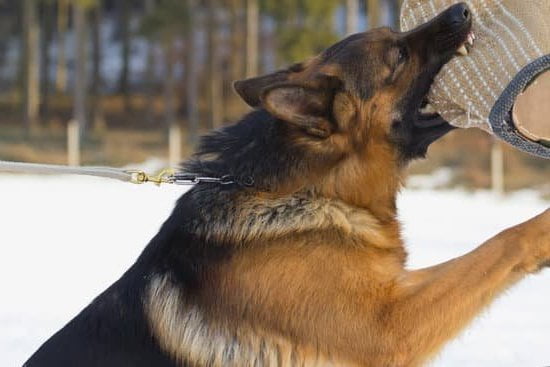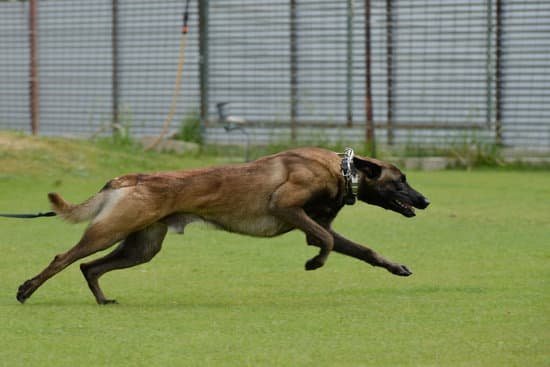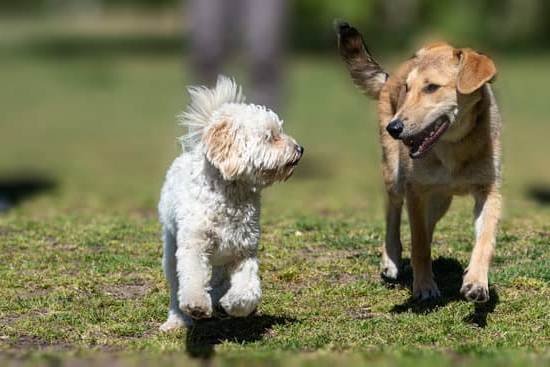Are you looking to improve your dog’s obedience and behavior? Clicker training might be the solution you’re looking for. In this article, we will discuss how to do clicker training for dogs, from understanding the basics to choosing the right clicker for your furry friend. Whether you’re a first-time dog owner or an experienced trainer, this comprehensive guide will help you master the art of clicker training.
Clicker training is a positive reinforcement method that uses a small device called a clicker to communicate with your dog. It is a science-based approach that focuses on rewards and motivation, making it an effective and enjoyable way to train your canine companion. By associating the sound of the clicker with a treat or praise, you can effectively teach your dog new behaviors and commands.
Before diving into the step-by-step guide and advanced techniques, it is important to understand the basics of clicker training and how it can benefit both you and your dog. Additionally, we will explore common mistakes to avoid and provide tips and tricks for successful clicker training. Whether you have a young puppy or an older dog, clicker training can be tailored to fit their unique needs and personalities.
Understanding the Basics of Clicker Training
What Is Clicker Training?
Clicker training is a positive reinforcement training method that uses a small handheld device, called a clicker, to mark desirable behavior in dogs. This method is based on the principles of operant conditioning, where the dog learns to associate the sound of the clicker with receiving a reward. This helps the dog understand exactly which behavior is being rewarded, making it an effective and efficient training method.
The Science Behind Clicker Training
Clicker training is based on the scientific principle of classical conditioning, where an association is formed between two stimuli. In this case, the sound of the clicker becomes associated with receiving a treat or positive reinforcement. This creates a clear and consistent way to communicate with your dog, making it easier for them to learn new behaviors and commands.
Getting Started With Clicker Training
To begin clicker training your dog, you will need a clicker and some high-value treats that your dog loves. Start by associating the sound of the clicker with receiving a treat by simply clicking and treating several times in a row.
Once your dog understands that the click means they will receive a reward, you can begin using it to mark specific behaviors that you want to reinforce. With patience and consistency, your dog will quickly learn how to respond to the sound of the clicker, making training sessions more enjoyable and effective for both of you.
Choosing the Right Clicker for Your Dog
When it comes to clicker training for dogs, choosing the right clicker is an important step in ensuring the success of your training sessions. There are several types of clickers available on the market, each with its own unique features and benefits. The key is to find a clicker that is comfortable for you to use and one that your dog responds well to.
One of the most common types of clickers is the traditional box clicker, which produces a distinct clicking sound when pressed. These clickers are easy to use and provide a clear, consistent sound that dogs easily recognize. Another option is the button clicker, which has a larger surface area and requires less pressure to produce a clicking sound. Some trainers also opt for electronic clickers that emit a beep or tone instead of a traditional clicking sound.
It’s important to experiment with different types of clickers to see which one elicits the best response from your dog. Some dogs may be more sensitive to certain sounds or may have a preference for a specific type of clicker. The goal is to choose a clicker that your dog finds motivating and easy to understand during training sessions.
In addition to selecting the right type of clicker, consider factors such as size, ease of use, and durability when making your decision. A comfortable grip and reliable mechanism are essential for seamless training sessions. Ultimately, finding the right clicker for your dog can make all the difference in how effective your clicker training sessions are.
| Types | Features |
|---|---|
| Box Clicker | Produces consistent clicking sound |
| Button Clicker | Larger surface area, requires less pressure |
| Electronic Clicker | Emits beep or tone instead of clicking sound |
Preparing Your Dog for Clicker Training
Before starting clicker training with your dog, it’s important to ensure that they are prepared and set up for success. Here are some key steps to take in order to prepare your dog for clicker training:
1. Establish a Positive Relationship: Before introducing the clicker, build a positive relationship with your dog through daily interactions, bonding activities, and basic obedience training. This will help create a strong foundation for clicker training.
2. Introduce the Clicker: Once your dog is comfortable and responsive to you, it’s time to introduce the clicker. Familiarize your dog with the sound of the clicker by clicking and immediately rewarding them with a treat. Repeat this process several times until your dog associates the click with a positive outcome.
3. Manage Distractions: Before diving into formal clicker training sessions, make sure to minimize distractions in the environment. Choose a quiet and familiar space where your dog can focus on learning without external interruptions.
4. Set Realistic Expectations: Keep in mind that every dog has different learning curves, so be patient and observe your dog’s behavior to gauge their readiness for clicker training. Some dogs may be ready to start formal sessions right away, while others may need more time to adjust.
By following these steps, you can effectively lay the groundwork for successful clicker training with your dog.
Remember that preparation is key when it comes to introducing any new training method to your pet. By taking the time to ensure that your dog is ready and receptive, you can set them up for success in their clicker training journey.
Additional Tips:
– Gradually increase the duration of each training session as your dog becomes more comfortable with the clicker.
– Always use high-value treats as rewards during clicker training sessions.
– Maintain a positive attitude and keep sessions fun and engaging for both you and your dog.
Step-by-Step Guide to Clicker Training
Clicker training for dogs is a highly effective and positive reinforcement method that can be used to teach your furry friend new behaviors and commands. Here is a step-by-step guide on how to do clicker training for dogs:
1. Introducing the Clicker: The first step in clicker training is to introduce the clicker to your dog. Start by clicking the device and immediately giving your dog a treat. Repeat this process several times so your dog can associate the sound of the click with receiving a reward.
2. Establishing a Cue: Once your dog understands that the click means a reward is coming, it’s time to pair the click with a specific behavior or command. For example, if you are teaching your dog to sit, wait for them to naturally perform the behavior and then click as soon as they do, followed by giving them a treat.
3. Reinforcing Behavior: Consistency is key in clicker training. Every time your dog responds correctly to a cue, use the clicker and follow it up with a treat. This will reinforce their understanding of what you are asking them to do.
By following this step-by-step guide, you can effectively use clicker training to teach your dog new behaviors and commands in a positive and rewarding way.
These simple steps allow you to effectively communicate with your pet and strengthen your bond through positive reinforcement techniques.
Tips and Tricks for Successful Clicker Training
Consistency Is Key
One of the most important tips for successful clicker training is consistency. This means using the same clicker sound every time, implementing the same rewards, and following a consistent training schedule. Dogs thrive on routine, so the more consistent you are with your training, the better results you will see.
Keep Training Sessions Short
Dogs have short attention spans, so it’s important to keep training sessions short and sweet. Aim for 5-10 minute sessions multiple times a day rather than one long session. This will help keep your dog engaged and eager to learn.
Be Patient and Positive
Clicker training takes time and patience, so it’s crucial to stay positive and patient throughout the process. If your dog is struggling with a certain command or behavior, avoid getting frustrated and instead focus on using positive reinforcement to encourage them.
By employing these tips and tricks, you can set yourself up for success when it comes to clicker training for dogs. Remember that every dog is unique, so be prepared to adjust your approach as needed based on your pet’s individual needs and responses. With dedication and consistency, clicker training can be an effective and rewarding way to bond with your furry friend while teaching them new behaviors and commands.
Common Mistakes to Avoid in Clicker Training
When it comes to clicker training for dogs, it’s important to be aware of common mistakes that can hinder the success of your training sessions. Here are some key things to avoid when using this method to train your furry friend:
1. Inconsistent Timing: One of the most crucial aspects of clicker training is timing. The click should always be followed immediately by a reward or treat to reinforce the desired behavior. If you’re inconsistent with your timing, your dog may become confused and not understand what they are being rewarded for.
2. Overusing the Clicker: While the clicker is a powerful tool in training, overusing it can lead to desensitization. It’s important to only use the clicker when you want to mark a specific behavior as correct. Using it too often can diminish its effectiveness and make it less meaningful for your dog.
3. Skipping the Basics: Clicker training is most effective when used in conjunction with proper training techniques. It’s important not to rely solely on the clicker and neglect other fundamental aspects of obedience training. Make sure to still use verbal cues, hand signals, and positive reinforcement alongside the clicker.
By being mindful of these common mistakes, you can ensure that you are effectively using the clicker as a training tool for your dog. Remember that patience and consistency are key when employing this method, and avoiding these pitfalls will help set you up for success in your training endeavors.
Advanced Techniques and Challenges in Clicker Training for Dogs
Shaping Behavior
One advanced technique in clicker training for dogs is shaping behavior. This involves breaking down the desired behavior into small, manageable steps and reinforcing each step until the dog is able to perform the complete behavior.
For example, if you want to teach your dog to roll over, you would first click and treat when your dog leans to one side, then when they continue to lean until they are on their back, and finally when they complete the full roll over. Shaping behavior requires patience and precision timing with the clicker, but it can be a highly effective way to train complex behaviors.
Adding Distractions
Another challenge in clicker training is adding distractions. Once your dog has mastered a behavior in a controlled environment, it’s important to gradually introduce distractions to ensure that they can still perform the behavior in real-life situations.
This could involve practicing commands at the park with other dogs around or having someone ring the doorbell while practicing obedience at home. By slowly increasing the level of distraction while continuing to use the clicker as a positive reinforcement, you can help your dog generalize their training to different environments.
Combining Clicker Training With Other Methods
While clicker training can be highly effective on its own, there may be instances where combining it with other training methods is beneficial. For example, some dogs may respond better to a combination of clicker training and lure-reward training for certain behaviors. It’s important to assess what works best for your individual dog and be open to adjusting your training approach as needed.
Clicker Training for Specific Behaviors and Commands
Clicker training can be used to teach your dog a wide range of specific behaviors and commands. Whether you want to teach them to sit, stay, come when called, or even perform more complex tricks, clicker training can be a highly effective method. The key is to break down each behavior or command into small, manageable steps that your dog can easily understand and learn.
One of the most important things to remember when using clicker training for specific behaviors and commands is to be patient and consistent. Each behavior or command should be taught in a clear and systematic way, with the use of the clicker to mark the exact moment when your dog performs the desired action.
For example, if you are teaching your dog to sit, you would click the moment their bottom touches the ground, followed by giving them a treat as a reward.
When using clicker training for specific behaviors and commands, it’s also important to set realistic goals and expectations for your dog. Not all dogs will learn at the same pace, so it’s important to be understanding and adaptable in your approach. Some dogs may pick up on certain commands more quickly than others, so it’s essential to tailor your training methods to suit your individual dog’s needs.
In addition, it’s crucial to keep training sessions short and fun for both you and your dog. Clicker training should always be a positive experience for your pet, so make sure to incorporate plenty of praise and rewards throughout each session. By focusing on positive reinforcement, you can help ensure that your dog enjoys the learning process and remains engaged in their training.
| Specific Behavior/Command | Clicker Training Method |
|---|---|
| Sit | Click at the moment when their bottom touches the ground. |
| Stay | Click when they remain in place for a specified period. |
| Come when called | Click when they respond promptly to their name. |
The Benefits of Clicker Training for Dogs
Clicker training for dogs has gained popularity in recent years due to its effectiveness and positive reinforcement techniques. This method of training utilizes a small handheld device that makes a clicking sound, signaling to the dog that they have performed a desired behavior. The benefits of clicker training for dogs are numerous and can have a significant impact on their obedience, behavior, and overall well-being.
One of the key benefits of clicker training for dogs is its ability to effectively communicate with your pet. The clicker provides a clear and consistent signal to your dog, letting them know exactly when they have done something right. This leads to quicker learning and understanding of desired behaviors, making the training process more efficient and enjoyable for both you and your dog.
Another major benefit of clicker training for dogs is its emphasis on positive reinforcement. By using the clicker as a marker for good behavior, you can reward your dog with treats or praise immediately after they hear the click. This creates a strong association between the desired behavior and the reward, leading to long-lasting results. Additionally, this positive reinforcement method strengthens the bond between you and your dog, creating a trusting and respectful relationship.
Furthermore, clicker training for dogs can be used to modify undesirable behaviors or teach complex commands. Whether you want to address issues such as excessive barking or jumping up on people, or if you want to train your dog to perform advanced tricks or tasks, the clicker can be an effective tool in achieving these goals. With consistency and patience, clicker training can help shape your dog into a well-behaved and responsive companion.
| Benefit | Description |
|---|---|
| Effective Communication | The clicker provides clear signals to the dog, making learning more efficient. |
| Positive Reinforcement | Clicker training emphasizes rewarding good behavior with treats or praise, strengthening the bond between owner and pet. |
| Behavior Modification and Advanced Commands | Clicker training can be used to address undesirable behaviors and teach complex commands or tricks. |
Conclusion and Next Steps for Clicker Training Success
In conclusion, clicker training for dogs is a highly effective and rewarding method for teaching new behaviors and commands. By using positive reinforcement and the clear communication provided by the clicker, you can effectively train your dog in a way that strengthens your bond and promotes good behavior. Understanding the basics of clicker training and choosing the right clicker for your dog are crucial first steps in ensuring success.
Once you have familiarized yourself with the fundamentals of clicker training, it’s important to properly prepare your dog for this type of training. This includes acclimating them to the clicker sound and creating a positive association with it. Following a step-by-step guide to clicker training will help ensure clarity and consistency in your training sessions. Remember to be patient, as every dog learns at their own pace.
As you progress in clicker training, it’s essential to pay attention to tips and tricks for successful training, as well as common mistakes to avoid. Additionally, exploring advanced techniques and challenges can take your dog’s training to the next level. Whether it’s shaping specific behaviors or commands or addressing more complex issues, there are endless possibilities with clicker training.
Overall, understanding how to do clicker training for dogs opens up a world of possibilities in creating a well-behaved and happy canine companion. By taking advantage of the benefits of this method, including its effectiveness and its positive impact on your relationship with your dog, you can look forward to long-term success in your efforts. With dedication, patience, and a willingness to continuously learn and adapt your approach, you can achieve great results through clicker training.
Frequently Asked Questions
How Do I Start Clicker Training My Dog?
To start clicker training your dog, you’ll need a clicker and some treats. Begin by associating the sound of the clicker with a reward, then use it to mark desired behaviors. Be patient and consistent in your training.
Does Clicker Training for Dogs Really Work?
Clicker training for dogs has been proven to be effective by many dog trainers and owners. The sound of the clicker marks the exact moment the dog does something right, making it easier for them to understand what behavior is being rewarded.
When Should I Use My Dog’s Clicker When Training?
Use your dog’s clicker during training to mark the precise moment when they perform a desired behavior. Timing is crucial in clicker training, so make sure to click the instant your dog exhibits the correct action, followed immediately by a treat or reward.

Welcome to the blog! I am a professional dog trainer and have been working with dogs for many years. In this blog, I will be discussing various topics related to dog training, including tips, tricks, and advice. I hope you find this information helpful and informative. Thanks for reading!





